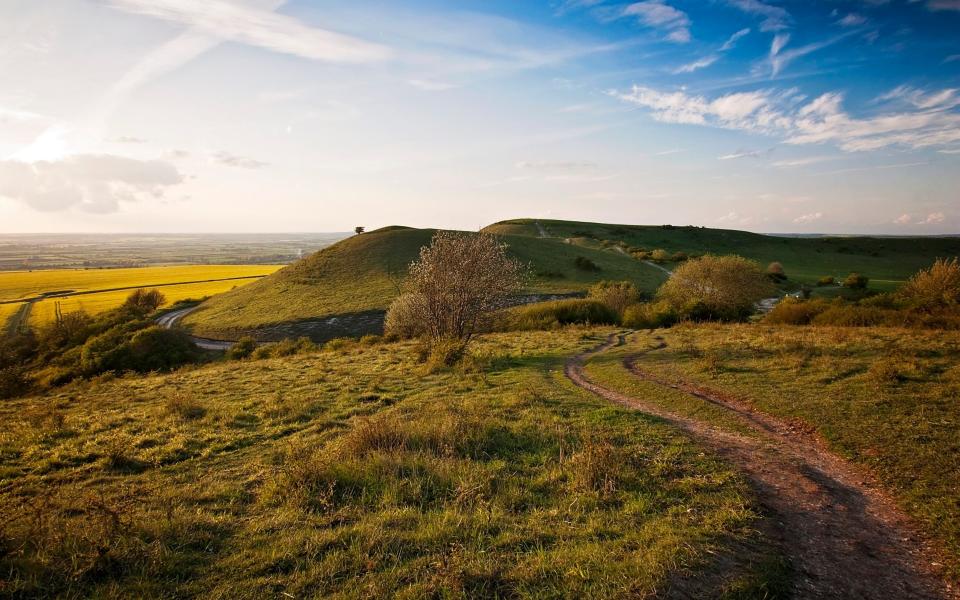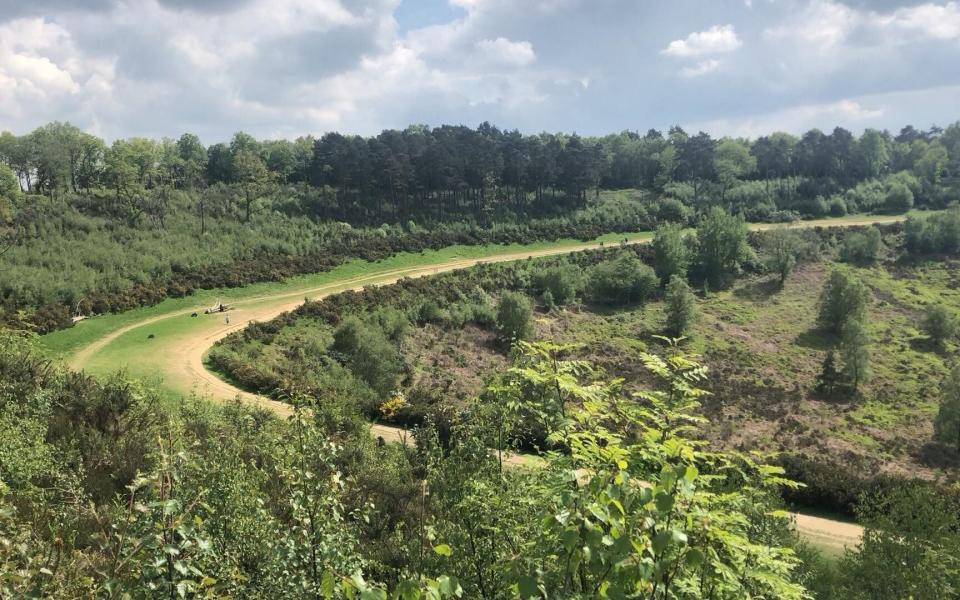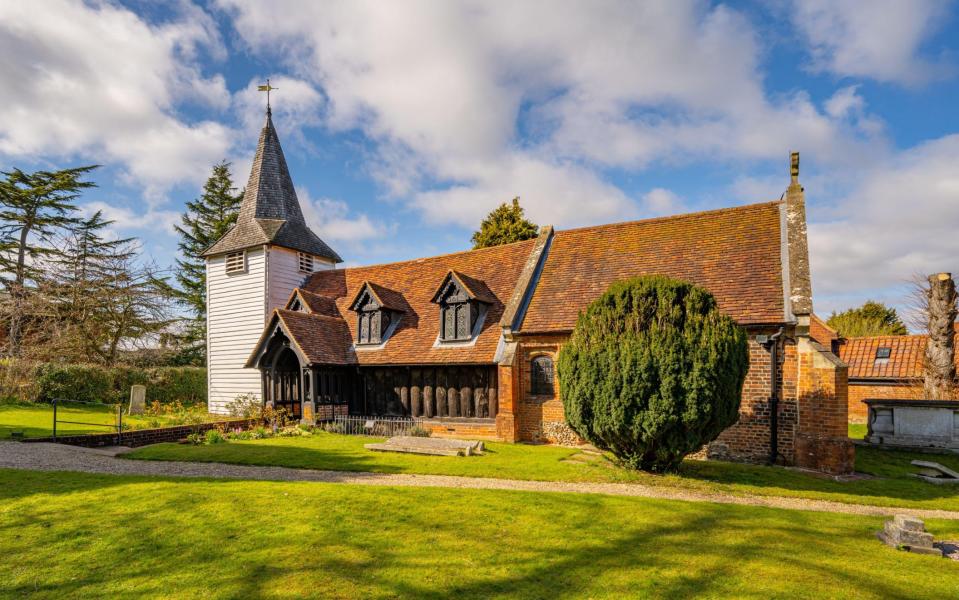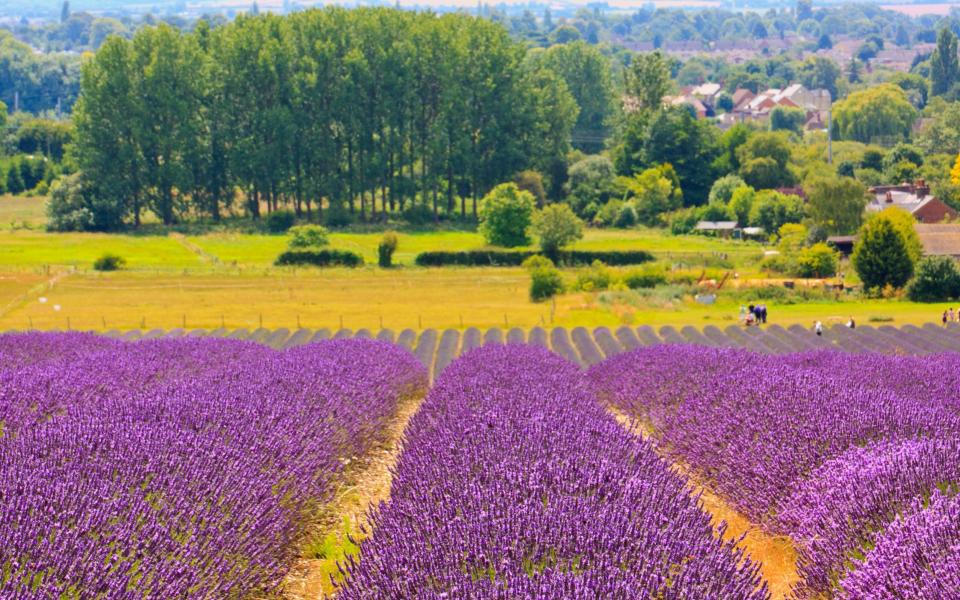The unexpected beauty spots in London’s green belt

In 1914, one Aston Webb told the London Society that he had a vision of the capital in 100 years’ time. He foresaw “a beautiful sylvan line practically all around London”, with “a certain amount of open spaces, pleasure grounds” protected by “town planning schemes”. He described this vision as a “green belt”.
Webb, it turned out, was onto something. In the 1930s, work began to protect the British countryside from unfettered urban sprawl, and today there are 14 green belts around the country, an area which covers more than a tenth (12.4 per cent) of all British land and which is inhabited by more than 30 million people.

There are green belts around Oxford, Birmingham, Newcastle, York and many other urban centres, but the biggest and best-known of them all is the 486,000 hectares of land that leaks outwards from the M25 into the suburbs of London.
The capital’s green belt is synonymous with the commuter set (Guildford, Sevenoaks and St Albans fall within its bounds) but it also contains some beauty spots that you wouldn’t expect to fall so close to the capital, many of which could form the cornerstone of a perfectly pleasant weekend away.
Ivinghoe Beacon, Buckinghamshire

Set in an area of wildflower-rich grassland and ancient woodlands is Ivinghoe Beacon, the bulbous starting point of The Ridgeway, a National Trail which spans the length of the Chiltern Hills.
On your visit you’ll share the hill with dog walkers and the odd model aircraft enthusiast (this is a prime spot for “slope soaring”, due to the lift generated by wind blowing up the hill), but humans have been here for many years. Archaeological evidence shows activity back to the Bronze Age, including burial mounds, and there is the faintest outline of an Iron Age hillfort at the summit.
Embark on the 10-mile circular walk and you might spot one of the rare butterfly species that inhabit the area, or even a red kite or a glow-worm. But to many the greatest point of excitement will be that Ivinghoe Beacon was used as a filming location in a number of the Harry Potter films. The best-known scene, perhaps, is in The Goblet of Fire when Harry and friends march to the top of the hill to track down an old boot (a portkey) which transports them to the Quidditch World Cup.
How to get there
The closest train stations are in Tring and Dunstable, where you’ll have to get a bus or a taxi to Ivinghoe Beacon. If travelling by car, put “Ivinghoe Beacon Circular Walk Car Park” into Google Maps.
Stay here
Consider the Kings Arms Hotel in Berkhamsted, less than 20 minutes’ drive away. Our expert reviewer describes it as: “A resurgent coaching inn right at the heart of Berkhamsted town centre that is once again a vibrant hub of food, drink and accommodation. Expect a ‘passion for pubbiness’ vibe, plus a decent restaurant and a set of comfy rooms.”
The Devil’s Punch Bowl, Surrey

Quite the name, for a leafy corner of the Home Counties. Legend has it that the devil scooped up great handfuls of Earth and hurled them at the god Thor, leaving the great natural amphitheatre that exists today (the name of local village Thursley means “Thor’s place”). Regardless of whether this is true – or if it is, indeed, the result of millennia of erosion from spring water beneath the sandstone causing the upper level to cave in – the site offers a breath of fresh air from the capital.
The Devil’s Punch Bowl has become infinitely more pleasant since 2011, when the heavily congested single-lane section of the A3 which skirted the rim of the site was rerouted through the new Hindhead Tunnel, which now rumbles below. The old section of the road is now signposted as a footpath within the park.
For the full experience, set out to complete the 4.5-mile walk that takes you around the top of the punchbowl (in winter, when unobstructed by trees, you’ll get the best view of the impressive terrain), but leave time to dip into the pit, with its shady woods and babbling brooks.
How to visit
Haslemere Station (with connections to London) is three miles away, where you can catch a bus which drops you off a few hundred metres away. The Devil’s Punch Bowl National Trust car park (GU26 6AB) costs £4, or is free for National Trust members.
Stay here
Try the Merry Harriers Hotel in Hambledon, a 20-minute drive away. Our reviewer says: “It’s all about crackling fires and contemporary bedrooms, welly boots and muddy paws at this 16th-century village inn. Guests can also go llama trekking through the scenic Surrey Hills knowing a warm return is waiting for them.”
The villages of Essex

In the easterly end of London’s green belt you will find a peppering of delightful villages, not least little Greensted-juxta-Ongar which is home to the oldest wooden church not just in Britain, but in the world. The 51 planks that form the nave of St Andrew’s Church were cut from English oaks around 1060, six years before William the Conqueror arrived on British soil.
You wouldn’t guess it, but nearby Ongar was once the final station on a branch of the Central Line, which closed in 1994 but has been brought back to life as the Epping Ongar Railway (£7.50 for adult tickets).
There are plenty of other lovely villages in the Essex countryside beyond the bounds of the green belt, including Finchingfield (postcard pretty, with its village green and duck pond), Thaxted (famed for its Morris Men) and Dedham (set in the National Landscape made famous by John Constable).
How to visit
Connections into London from Epping, where you can hop on the aforementioned railway to Ongar. Otherwise, you are a stone’s throw from the M25, making it easy to reach the villages by car.
Stay here
There are plenty of pubs with rooms in the area (this Telegraph round-up is a good starting point). For something a bit different, book a spot at the luxury hideaway retreat of Colemans Farm, which has a treehouse (The Old Oak; from £250) and a glass-roofed pyramidal room called The Trap (from £155).
Denbies Vineyard, Surrey

If you have never visited a British vineyard before, Denbies should be at the top of your list. Set against the backdrop of the North Downs, this one of the biggest single estate vineyards in the country, with seven miles of public footpaths to explore across 650 acres – ask in the gift shop and they’ll be able to supply you with a map for little ones.
Denbies is also the site of the Bacchus Wine Half Marathon & 10k event (inspired by the famous Marathon du Médoc in Bordeaux) which takes place in September every year. Runners, many in fancy dress, take regular pit-stops to sample English wines en route. A hoot, whether you are participating or observing.
How to visit
Denbies is a pleasant 15-minute walk from both Dorking and Box Hill and Westhumble stations, both of which provide easy access to London. If driving, leave the M25 at Junction 9 then follow the A24 south towards Dorking.
Stay here
Denbies has its own Vineyard Hotel, with 17 en-suite rooms and a new restaurant and bar area. Alternatively, splash out on a stay at Beaverbrook just up the road – offering a tantalising glimpse into British high society, with its original artworks and landscaped gardens.
Hitchin Lavender Fields, Hertfordshire

No, that isn’t a photograph of Provence. It’s the Hitchin Lavender Fields, 11 miles from Luton Airport.
The farm has been in the Hunter family for five generations and is primarily in the business of growing lavender for oil, but it has exploded in popularity in the past decade thanks to the rise of social media photo-sharing apps like Instagram. It costs £7 to enter, and you’ll have to cough up an extra £4 to fill a bag with lavender (on a bring-your-own-scissors basis).
“It used to be locals coming over for a stroll and a small bunch of flowers to take home – perhaps slightly older folk. But now, it’s people from all over the globe, and of all ages. It’s got real mass appeal,” the farm’s owner, Tim Hunter, told The Telegraph in 2019.
How to visit
Direct trains from London to Hitchin take just over half an hour. Otherwise, drive up the A1 and follow signs to Ickleford.
Stay here
Look no further than The Fox at Willian, located in a picture-perfect village. Our reviewer writes: “The Fox has pretty much nailed all the things a local country pub should do well, serving excellent food but remaining an inviting place to stop by for a pint on the village green. In a nutshell, it’s a cosy place to stay in the country that you can reach in no time at all from London – plus it’s dog-friendly.”


